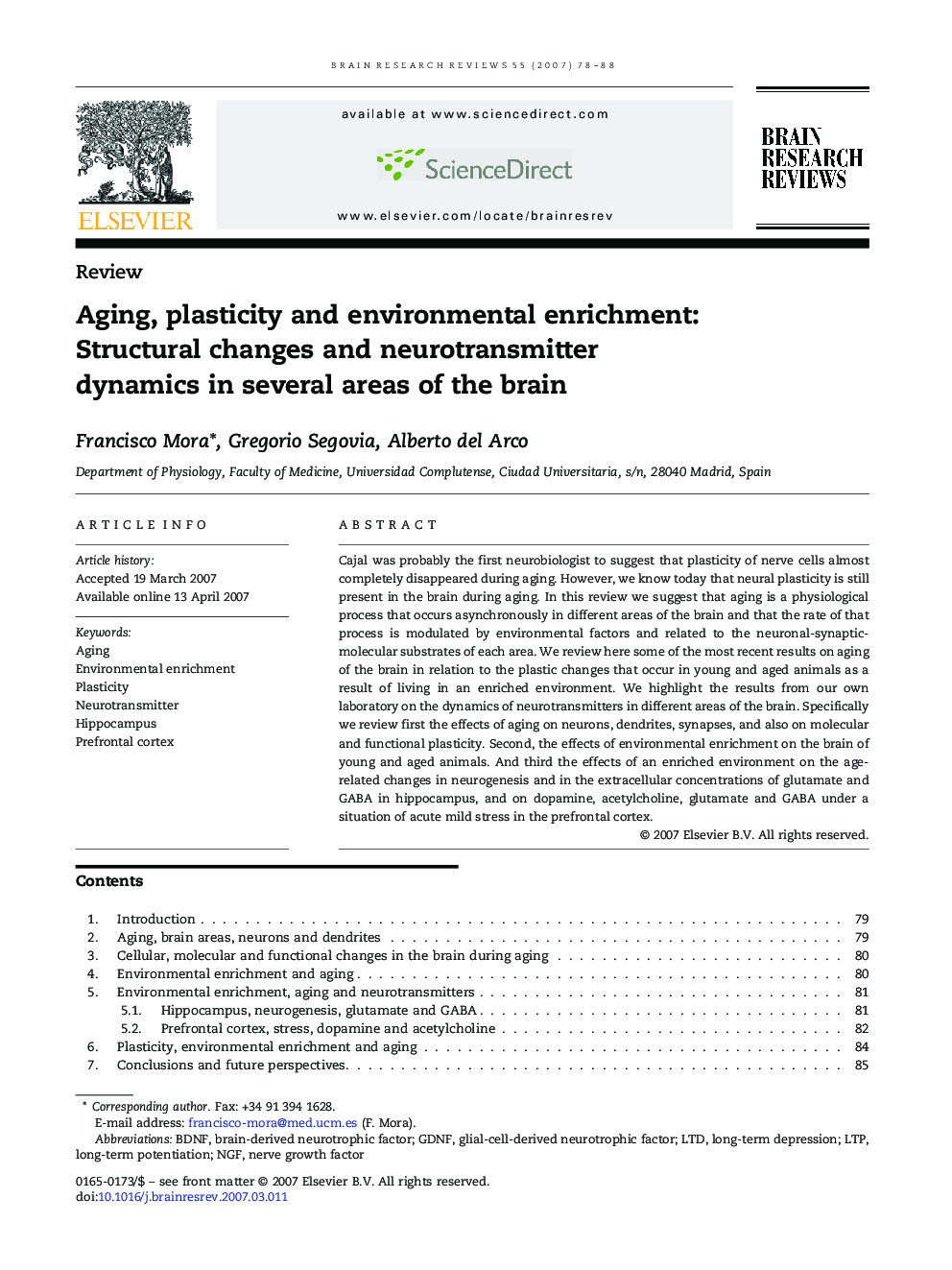| Article ID | Journal | Published Year | Pages | File Type |
|---|---|---|---|---|
| 4334064 | Brain Research Reviews | 2007 | 11 Pages |
Cajal was probably the first neurobiologist to suggest that plasticity of nerve cells almost completely disappeared during aging. However, we know today that neural plasticity is still present in the brain during aging. In this review we suggest that aging is a physiological process that occurs asynchronously in different areas of the brain and that the rate of that process is modulated by environmental factors and related to the neuronal-synaptic-molecular substrates of each area. We review here some of the most recent results on aging of the brain in relation to the plastic changes that occur in young and aged animals as a result of living in an enriched environment. We highlight the results from our own laboratory on the dynamics of neurotransmitters in different areas of the brain. Specifically we review first the effects of aging on neurons, dendrites, synapses, and also on molecular and functional plasticity. Second, the effects of environmental enrichment on the brain of young and aged animals. And third the effects of an enriched environment on the age-related changes in neurogenesis and in the extracellular concentrations of glutamate and GABA in hippocampus, and on dopamine, acetylcholine, glutamate and GABA under a situation of acute mild stress in the prefrontal cortex.
